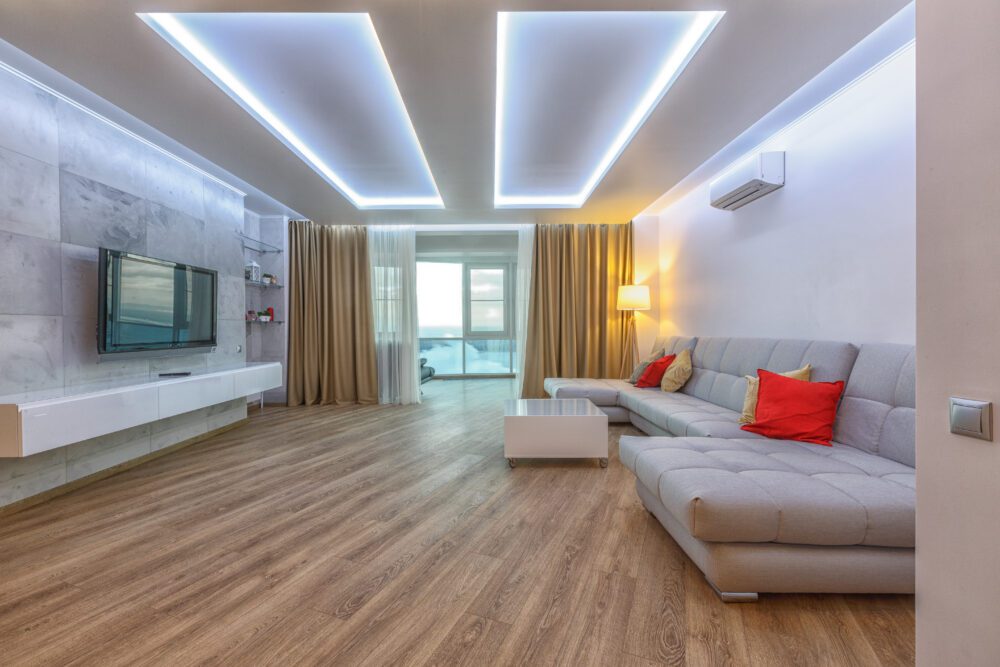The world trade of lighting fixtures

According to CSIL report ‘Lighting: World Market Outlook‘ the world trade of lighting fixtures trend has been positive in recent years. Over the period from 2012 to 2022, the average annual growth of international trade has been approximately 4%, increasing from US$ 32 billion to US$ 49 billion.
In 2018, international trade reached its pick, US$ 45 billion. After a setback in 2019, the world trade further slowed down in 2020, reaching US$ 40 billion, as the Covid-19 pandemic severely disrupted international flows of goods. However, from the end of 2020, the international trade of lighting fixtures started recovering and in 2021 the pre-crisis level could be overtaken, amounting to US$ 51 million.
Following the substantial growth in 2021, international trade in lighting fixtures experienced a slowdown in 2022. Both imports and exports decreased (around -5% and -2%, respectively) compared to 2021, with an average decline approaching to -4%. Preliminary data for 2023 show a further decrease. It is estimated that the global trade in lighting fixtures will be at around US$ 49 billion of exports and about US$ 44 billion of imports.
THE MAIN EXPORTING COUNTRIES
Top 10 exporters are China, Germany, Italy, the Netherlands, the United States, Poland, Mexico, Austria, Canada and France. These countries hold at 82% share on the total export of the considered 70 countries.
China is by far the largest exporter of lighting fixtures, as the value of its export flows amounted to 54% of the world value. The main destinations are the United States and Europe. In 2022, China’s lighting prices reveal two distinct patterns, finished product prices increased by approximately 6%, while component prices experienced a reduction, likely around -5%.
Regarding finished products, prices showed a slightly higher increase abroad, approximately 7%, compared to the slightly lower increase of around 5% in the domestic market. Germany is the first European exporter of lighting fixtures and the first importing country (US$ 2.9 and US$ 3.6 billion respectively).
Italy is the second largest exporter of lighting fixtures in Europe (almost US$ 2 billion) and ranks first as net European exporter. Poland is the second net European exporter of lighting fixtures, with export worth in excess of US$ 1.5 billion in 2022. The Netherlands shows a growth in its export during 2022 in excess of US$ 1.8 billion; Germany remains by far the largest destination, with a share equal to 36%. It should be noted the excellent performance of Vietnam.
Although not ranking among the top exporters in the world, the Asian country recorded the highest average increase in the period 2017-2022 with a growth of almost 40%.
THE MAIN IMPORTING COUNTRIES
Top 10 importing countries for lighting fixtures are: the United States, Germany, France, the United Kingdom, the Netherlands, Canada, India, Vietnam, Italy and Australia. These countries hold at 57% share on the total import of the considered 70 countries.
The United States retains its position as the leading global importer of lighting fixtures, absorbing roughly one-fifth of the world value. In 2022, US imports of lighting fixtures increased by nearly 4%, reaching a value of approximately US$ 9 billion. Despite continuing to lose market share, China remains by far the most significant partner, with a value of around US$ 4 billion, accounting for over 40% of US lighting fixture imports. Mexico and Canada follow with shares of 22% and 8%, respectively. It’s worth noting the remarkable achievements of Cambodia and Vietnam. The two Asian countries have consistently outperformed others in recent years, boasting impressive annual growth rates of approximately 68% and a staggering 104%, respectively.
The Federal Reserve’s significant tightening of monetary policy that commenced last year, coupled with reduced household savings, is anticipated to exert a negative impact on consumer and business expenditures. As a consequence, it is expected that economic growth will experience a pronounced deceleration during the latter half of 2023.
The market’s year-end prospects appear pessimistic, with CSIL predicting a roughly 2% decline in real terms, excluding any producer price hikes. The residential sector is set to be the primary driver behind this downward trend in growth. Nevertheless, the issue of prices should be taken into consideration during the period from 2010 to early 2023, when average prices of lighting equipment grew at an average annual rate of 2.1.
The year 2022 ended with a price increase of 8.5% and in 2023 an increase of about 6% is also expected, due to the rise in the cost of raw materials and energy.
CSIL closely monitors the performance of the lighting fixtures market in Europe through the report ‘The European Market for Lighting Fixtures‘ and, through the report ‘Lighting: World Market Outlook’, CSIL provides an overview of the global lighting fixtures industry, including market size, international trade statistics, market structure analysis and worldwide competition